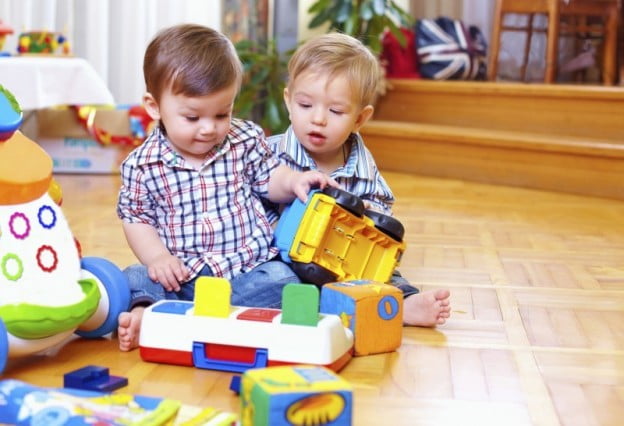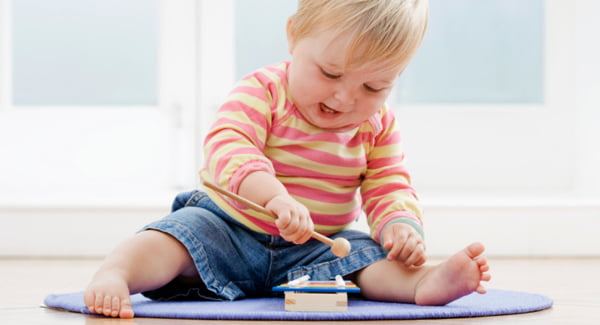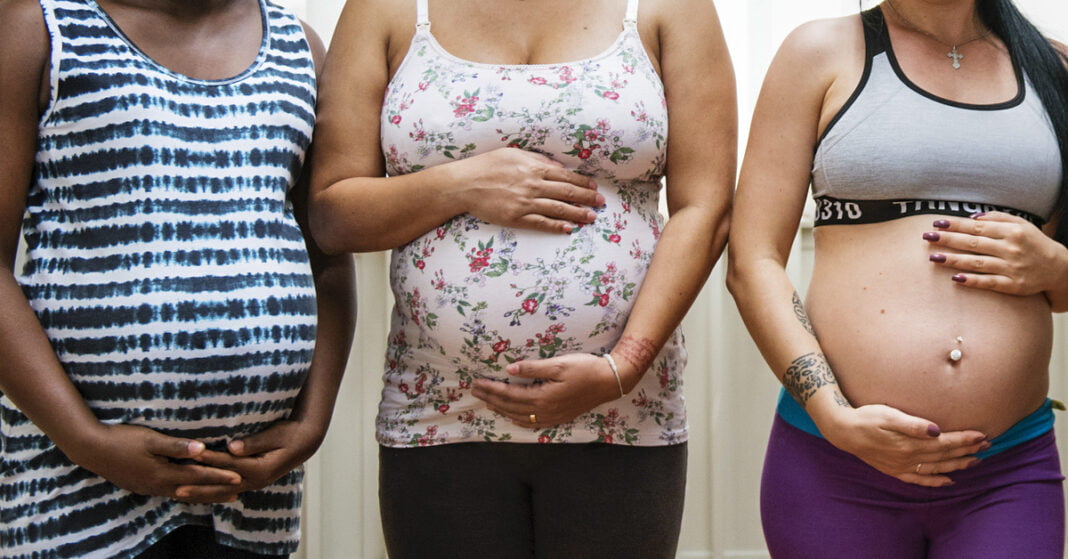Babies grow physically during the first two years of life, but also they grow cognitively. Day by day they connect with and learn about their environment, but also they are creating new connections and pathways between nerve cells both with their brains and between their brains and bodies.
The visceral growth and change are easily attended to and measured in precise terms, such as in pounds and inches. The mental change and evolution are a little harder to determine as clearly. Therefore, you need to have cognitive milestones, which are important steps in your child’s development.
Cognitive milestones during your child’s early ages:

In human history, babies were thought of as simple and passive beings. Before the 20th century, children were often seen as miniature versions of adults. But this was changed when the psychologist Jean Piaget has said that children think differently than adults do and people began to view childhood and adolescence as a unique period of growth and development.
Adults often declined the notable intellectual skills of infants and very young children. But, modern thinkers and studies have shown that babies are always learning, thinking, and exploring the world around them. Even newborn babies are hungrily taking in information and learning new things. Babies are discovering new things about the world, but also, they are constantly discovering new things about themselves.
First three months of baby’s life:
These three months are a time of wonder. Exploring the basic senses and learning more about the body and the environment are the major developmental milestones at this age.
During this period, most infants begin to: use facial expressions to respond to their environment; tell between tastes, from sweet, salty, bitter, and sour; see all colors of the human visual spectrum; focus on moving objects, including the faces of caregivers; discern objects more clearly within a distance of 13 inches; detect sound differences in pitch and volume; demonstrate expecting behaviors, like embed and sucking at the site of a nipple or bottle.
Second three months of baby’s life:
Perceptual abilities are still developing in the early infancy. Infants begin to develop a stronger sense of perception from the age of three to six months. At this age, most babies begin to respond to the facial expressions of other people; recognize familiar faces; react to familiar sounds; imitate facial expressions.
Third three months of baby’s life:
It is not an easy task to look inside the mind of an infant. Doctors cannot ask babies what they think at any given moment. To know more about the mental process of infants, doctors come up with a number of creative tasks which reveal the inner working of the baby’s brain.
Scientists have found that most infants from six to nine months tell the difference between pictures depicting different numbers of objects; gaze longer at impossible things, such as an object suspended in midair; understand the differences between animate and inanimate objects; utilize the relative size of an object to determine how far away it is.
Fourth three months of baby’s life:
As your baby becomes more physically adept, he or she is able to explore the world around him or her in greater depth. Walking, crawling, and sitting up are just a few of the physical milestones which allow babies to gain a greater mental understanding of the world around them.
As babies approach one year of age, they are able to understand the concept of object permanence, the idea that an object continues to exist even though it cannot be seen; respond with gestures and sounds; manipulate objects by turning them over, trying to put one object into another, etc.; imitate gestures and some basic actions; enjoy looking at picture books.
From one to two years:
After your child reached one year of age, his physical, social, and cognitive developments seem to grow by leaps and bounds. In this period, children spend a lot of time observing the actions of adults.
So, it is very important for parents or caregivers to set good examples of behavior. Most children who are one year old, begin to understand and respond to words; tell the difference between “me” and “you”; point out familiar objects and people in picture books; learn through exploration; imitate the actions and language of adults; identify objects that are similar.
From two to three years:
When your child is two years old, he or she becomes increasingly independent. They are now ready to better analyze the world. A great deal of learning during this stage is the result of their own experience.
Most two-year-old children are able to: stack rings on a peg from largest to smallest; sort objects by category (for example, trees, flowers, animals, etc.); respond to simple directions from parents and caregivers; name objects in a picture book; match objects with their uses; imitate more complex adult actions (playing house, pretending to do laundry, etc.); identify their own reflection in the mirror by name.
From three to four years:
In this period, children are becoming increasingly capable of analyzing the world around them in more complex ways. As they are observing things, they are beginning to sort and categorize them into different categories, which are often referred to as schemas. Children are becoming much more active in the learning process and also they begin to pose questions about the world around them. Around this age, “Why?” is one of the most questions.
At the age of three, most kids are able to understand how to group and match objects according to color; seek answers to questions; organize objects by size and shape; maintain a longer attention span of around 5 – 15 minutes; learn by observing and listening to instructions; demonstrate awareness of the past and present; ask “Why?” questions to gain information.
From four to five years:
As children are near school age, they become better at counting, imitating adult actions, using words, and other basic activities that are important for preschool preparedness. Most children, who are at age four, are able to tell where they live; rhyme; name and identify many colors; draw the shape of a person; count to five; create pictures that they often name and describe.
Supporting cognitive development:
One of the strongest tools to support development and learning is your relationship with your infants and toddlers. It is very important to know what your children are expecting from you. For infants, security is in the first place. They need you to be there for them. For pre–toddlers, exploration is the focus.
They need you to build a secure and interesting environment for them to discover. Toddlers are forming their identities. They need you to create positive boundaries and help them work through their frustrations and disagreements. Your infant and toddler is a scientist at work.
He or she will actively learn new things by making messes, interacting, questioning, figuring things out, solving problems, talking, exploring, moving, and touching. These children need your support and enhance their play and learning both physically and verbally. Your interactions with children need to support and facilitate learning, exploration, and play. As you are getting to know each child individually, you will learn a lot of things about their development and their interests.
You should be curious about what makes each child laugh, smile, or seem nervous. Then, use your own language to describe what you notice. This will assist you to use speech in a way that supports cognitive development. You should use simple sentences which are rich in vocabulary and descriptive language and which are meant for your children.
You need to converse and ask questions during play, learning, and caregiving routines. Your infant and toddler need help to understand the world around them. Also, you can talk and ask questions about what your child is doing with his toy.
You should include a variety of words instead of using the same words all the time. When you use a large vocabulary, this will help your infant and toddler to become successful readers one day. You should avoid the tendency to tell your infant or toddler what they are thinking, what will happen or what to do.
You surely know what will happen when your child will pour sand through a sieve. But, when you let your child figure it out, then it will allow learning to happen and it will encourage further learning. When you tell your child what will happen, then this will take away the moment of discovery.




